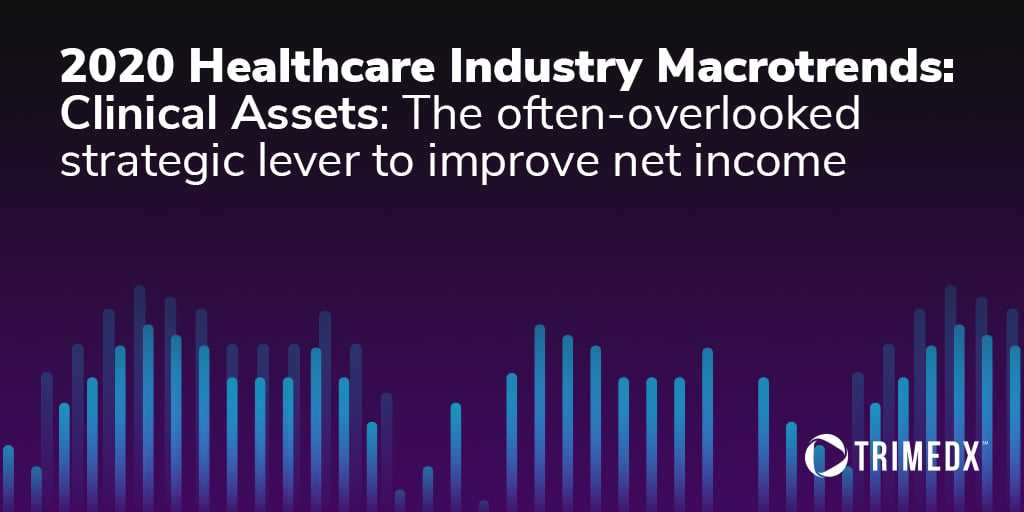According to Moody’s Investors Service, after falling 39% between 2015 and 2017, margins for U.S. nonprofit and public hospitals stabilized in 2018¹, but the underlying financial picture remains troubling. While the health system revenue line exceeded the health system expense line in 2018², reversing a trend that has held since 2015, the median operating margin for nonprofit hospitals is only 1.6%, well below a ’sustainable’ operating margin target north of 2.5%³. Facing anemic and unsustainable margins, health systems are refocusing their medium and longer-term efforts on growing revenue from both traditional and nontraditional sources.
How does a best–in–class clinical asset management program help address margin pressure? There are three levers that are vital.
First, clinical assets themselves often represent a hidden and underleveraged reservoir of immediate cost savings. TRIMEDX has conducted more than 550 current state assessments, and we have consistently found that organizations typically spend anywhere from 10% to 20% more each year on their clinical assets than they realize. There are several reasons, but the best way to summarize is a lack of visibility or, more specifically, a lack of visibility into an accurate inventory of assets and operational expense distributed across the health system.
Through data and our proven processes, scale and insights, we are able to secure immediate, substantial and guaranteed savings on day one. But that is just the beginning. We realize we need to deliver ongoing and persistent operational cost savings. So, with every additional clinical asset you bring into your organization, we bring our scale to bear to secure best–in–class pricing, typically 10% to 15% below market.
Second, we improve net income, and we do that by safely extending the life of your equipment while still maintaining your service deliverables. Through our data and analytics on over 3.4 million devices in our proprietary database, we know exactly what to expect from your equipment and have a clear line of sight to how long we can safely extend the life of your assets. As we run equipment past its point of depreciation, that operating expense then falls directly to improve the bottom line.
Finally, our informatics and algorithms allow us to understand, at a fundamental level, and across multiple metrics, the utilization rate of your equipment. This is critical, as we know health systems spend 25% of their capital on clinical assets even without having clarity into whether that spend is necessary. By arming you with key insights into utilization, we can help you understand if new equipment is truly necessary, or if you can reallocate or repurpose existing equipment, thus minimizing unnecessary capital spend.
The ability to make strategic, objective decisions around whether to deploy precious capital against replacement equipment is vital, especially since health systems will need to have adequate capital to deploy against growth opportunities that will often exist in nontraditional settings of care.
To learn more about how TRIMEDX can optimize capital investments in an era of anemic margins, click here.
SOURCES:
¹Preliminary Medians Underscore Negative Sector Outlook,” Moody’s Sector In-Depth, April 2018
²“Health System Financial Analysis Post-ACA,” Navigant Insights, Sep 2018
³“Health Care Industry Trends 2019,” The Advisory Board Company, January 2019
